Longing for Life Beyond the Lawn
Photos by Blake Goll, Jennifer Mathes and Jessica Wolff, courtesy of Willistown Conservation TrustTry wildflowers
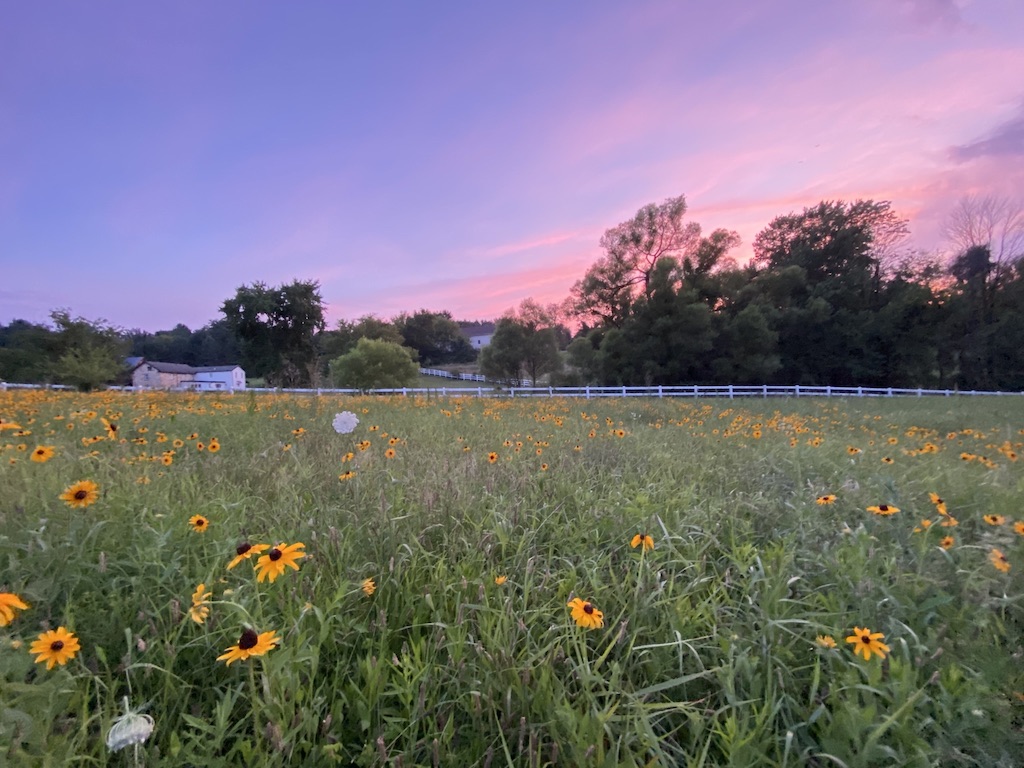
They’d attained the American dream. Well-loved toys of three young boys adorned the driveway. A fluffy Great Pyrenees loafed on the front yard, waiting for his daily Milk-Bone from the postman. And, the icing on the cake, a white picket fence encompassed 4.5 acres of emerald green lawn.
But a few years after moving to this little paradise in Malvern, Jessica and her husband grew tired of the time it took to mow and maintain this patch of nonnative turf grass.
“What, after all, was its purpose, other than a tenet of homeownership with a cult following of people displaying their life status?” Jessica often asked herself. As a thoughtful landscape architect dedicated to helping other living things — think birds, pollinators — Jessica decided to redefine her definition of thriving. She’d convert her curated lawn into a dissident laboratory of biodiversity.
The Making of a Wildflower Meadow
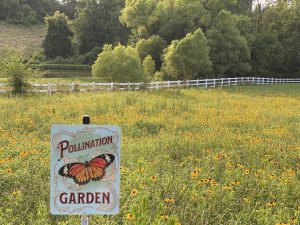
In spring 2022, Jessica consulted Weeds, Inc. (a local company specializing in meadows) about converting 2.5 acres of her lawn to native wildflowers and grasses. They divided the site into three zones based on soil composition, providing a separate plant list for each. After eliminating the lawn grass in fall 2022, Weeds, Inc. tilled and sowed the yard with native seeds (from Ernst Seeds) that December.
By July 2023, Jessica was elated to witness a full field of wildflowers! The dominant species the first summer included black-eyed Susan, coneflowers and native sunflowers creating a “fields of gold” vibe. Wild bergamot, vervain and asters took their turns adding vibrant splashes of violet hues as the summer progressed.
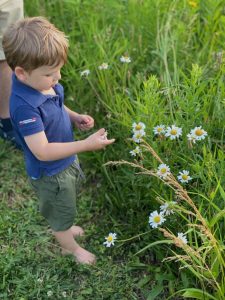
Wide-eyed friends and neighbors took notice of Jessica’s dreamy yard, which had become her artist’s palette, while a legion of pollinators — monarch butterflies, bumblebees, hummingbird clearwing moths — flocked to it.
For maintenance, Jessica works with North American Land Trust (NALT), which holds an easement on part of the property. Mowing occurs just once a year now, in late winter or early spring, before insects and birds begin to nest. Jessica keeps NALT informed whenever she adds new wildflower seeds. This spring, her sons were delighted to help her hand sow more seeds, these from the Bee and Butterfly Habitat Fund. The company’s Seed a Legacy Program provides bulk meadow seeds to homeowners interested in native wildflower meadow conversion projects.
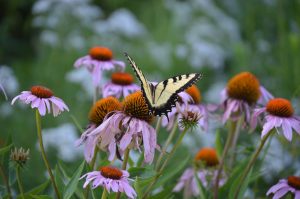
Jessica is enthusiastic about her yard “experiment” and looks forward to seeing the changes year after year. One of her favorite things has been watching her children’s immersion in the natural world that she welcomed into their lives. They’ll remember raising painted lady butterflies and then watching them flit merrily about the meadow.
This summer, Jessica also consulted Willistown Conservation Trust (WCT) about installing meadow bird boxes, which she can monitor with her boys. The family was spellbound by the families of bluebirds and tree swallows that quickly occupied the boxes.
Changing Paradigms — Tidy Isn’t Everything
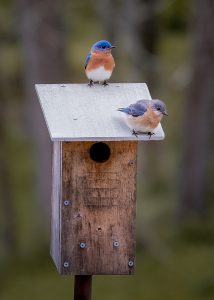
Wildlife populations, including birds and beneficial insects, have decreased by 70% since 1970. As awareness grows around the biodiversity crisis and homeownership grows increasingly difficult, some Americans are beginning to embrace the au natural/back-to-nature mindset, allowing flowering “weeds” and less lawn.
U.S. lawns cover over 48 million acres of the country, more than any other single crop. This nonnative plant (even Kentucky bluegrass isn’t native) requires immense amounts of water, time and even harmful chemicals for upkeep. Because human-caused habitat loss is one of the primary stressors on the natural world today, it’s our responsibility to redesign our yards with ecological function in mind.
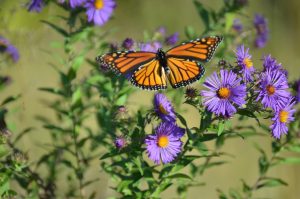
Many initiatives exist today, including Dr. Doug Tallamy’s Homegrown National Park, the largest call-to-action of its kind, encouraging people to personally address the biodiversity crisis by adding native plants and removing invasive ones in schools, yards and parks. By focusing on native plants, we can support the insects that rely on them, including powerful pillars of the food web — like caterpillars — that are critical food sources for birds. Nonnative plants, on average, support 72% fewer insect species than native plants.
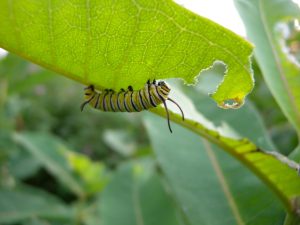
“No Mow May” is another movement you may have seen that encourages letting your lawn go for the crucial first weeks of spring. This is when insects are waking up from winter and can benefit from much needed food sources your flowering lawn weeds can offer.
Last year, WCT received a grant from the Pennsylvania Department of Conservation and Natural Resources for their Lawn Conversion Program. This funding allows WCT to subsidize the cost (typically $4,000–$5,000 per project) of converting mowed lawns into meadows. Working with local government, homeowner’s associations, schools, churches and private homeowners in the area, WCT is now in the process of converting 50 acres of biologically barren lawn to living meadow!
DIY Hacks for Hosting Habitat at Home
No matter the size of your yard or your resources, you can help restore our wild heritage. By helping nature, we enrich our own lives.
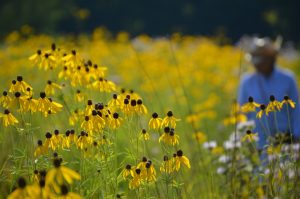
Choose the right plants. Identify places in your yard where you don’t walk or play, and begin to replace turf with native perennials, shrubs or trees. Focus on keystone species (the most productive plants, like oak trees, that support the most species of insects and wildlife). Remove invasive species, following the 70/30 rule of thumb: strive for 70% native plants.
Protect the full life cycle of insects. Over 90% of caterpillars that develop on trees drop to the ground for part of their life cycle. Replace lawn under trees with well-planted beds and leave the leaves where you can. Also, many pollinators nest or overwinter in plant stems. Mow meadows and perennials only in the early spring when possible and leave the stalks where they fall.
Be a biodiversity advocate. If your local government or HOA has strict ordinances on lawn care, advocate for landscaping that supports pollinators and wildlife. If you don’t see native plant selections at your local nursery, ask them to stock them.
Willistown Conservation Trust is an accredited nonprofit land trust that focuses on 28,000 acres in Chester and Delaware Counties. It has permanently conserved 7,500 acres since 1996 and offers six renowned programs for public engagement and research: Bird Conservation, Community Farm, Education and Outreach, Land Protection, Stewardship and Watershed Protection. For more habitat at home resources and inspiration, visit WCTrust.org and follow @WCTrust.
Our Favorite Resources
- Arrowwood Landscape Design
- B&D Builders
- Ball & Ball
- Berk Hathaway Country Prop
- Berk Hathaway Holly Gross
- Berk Hathaway Missy Schwartz
- Cullen Construction
- Dayton Lock
- Dewson Construction
- E.C. Trethewey
- Homestead Structures
- Keystone Gun-Krete
- King Construction
- Main Street Cabinet Co.
- McComsey Builders
- Monument/Sotheby’s Int’l
- Mostardi Nursery
- Mountaintop Construction
- MR Roofing
- NV Homes
- Precise Buildings, LLC
- Rittenhouse Builders
- Sheller Energy
- Shreiner Tree Care
- Stable Hollow Construction
- Warren Claytor Architects
- Wedgewood Gardens
- White Horse Construction
